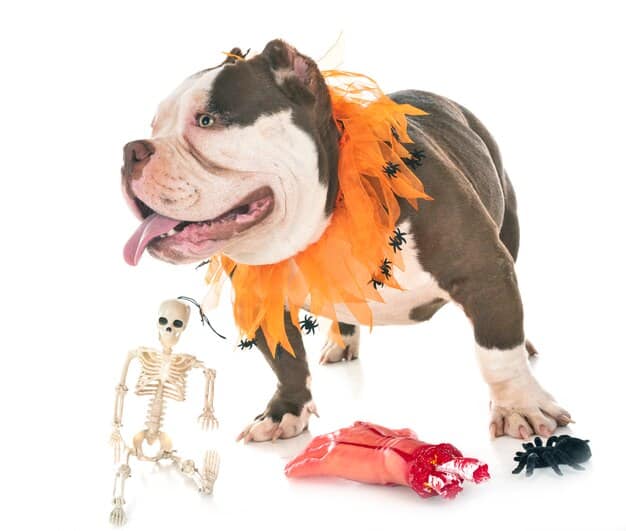Brachycephalic Breeds in 2025: Profiles & Respiratory Care in the US

Brachycephalic dog breeds, known for their shortened snouts, require special respiratory care. This article provides updated breed profiles and essential information for owners in the US, addressing common health concerns and preventative measures relevant in 2025.
Do you love the charming, flat-faced appearance of brachycephalic dog breeds? Understanding their unique respiratory needs is crucial for ensuring they lead happy, healthy lives in 2025, especially here in the US.
Understanding Brachycephalic Dog Breeds
Brachycephalic dog breeds have become increasingly popular over the years. Their distinctive, flattened faces may be adorable, but can predispose them to specific health issues. So what exactly defines these breeds?
The term “brachycephalic” originates from Greek words meaning “short head.” This anatomical characteristic influences not only their appearance but also their respiratory function, making them prone to Brachycephalic Obstructive Airway Syndrome (BOAS).
Common Characteristics
Aside from their shortened snouts, these breeds often share other common features:
- Wrinkled faces, such as those seen in Pugs and Bulldogs.
- Relatively large, round eyes that can be susceptible to injury.
- Compact body builds, although this varies among different breeds.
Understanding the physical traits that define **brachycephalic dog breeds** is the first step in recognizing and addressing the specific health challenges they may face.

Popular Brachycephalic Breeds: Updated Profiles for 2025
Several breeds fall under the brachycephalic category, each with its unique personality and care requirements. Here are a few profiles to help you get to know some specific breeds better.
These popular dogs make wonderful companions, but it is really important to understand their predispositions.
French Bulldog
French Bulldogs are compact, muscular dogs known for their bat-like ears and playful personalities. However, they are prone to breathing difficulties, overheating, and skin issues.
Pug
Pugs are small, charming dogs with wrinkled faces and a distinctive curled tail. Their flat faces make them susceptible to respiratory problems and eye injuries.
English Bulldog
English Bulldogs are sturdy, docile dogs with a characteristic pushed-in face and stocky build. They often require specialized care to prevent breathing problems and overheating.
Choosing a brachycephalic dog breed involves commitment to understanding and addressing their specific requirements. Responsible breeders prioritize health and work to minimize these issues.
Respiratory Challenges in Brachycephalic Dogs in 2025
The unique facial structure of brachycephalic breeds contributes to a range of respiratory challenges. Due to shortened snouts, their airways are often compressed, leading to breathing difficulties.
Brachycephalic Obstructive Airway Syndrome (BOAS) is a frequent concern for these breeds. BOAS encompasses several conditions that obstruct airflow.
- Stenotic Nares: Narrowed nostrils restrict airflow into the nasal passages.
- Elongated Soft Palate: An extended soft palate obstructs the airway.
- Tracheal Hypoplasia: A smaller-than-normal trachea (windpipe) limits airflow.
- Everted Laryngeal Saccules: Tissue sacs inside the larynx turn outward into the airway, causing further obstruction.
Identifying and addressing these respiratory challenges in brachycephalic dog breeds are paramount for improving their quality of life.
Recognizing Respiratory Distress: Signs to Watch For
Owners of brachycephalic dogs should be vigilant in monitoring their pets for signs of respiratory distress. Early detection and intervention are crucial for managing BOAS.
It’s important to watch for various behaviors in different temperatures and energy levels during exercise.
Common Symptoms
Pay attention to the following symptoms, which may indicate respiratory distress:
- Noisy Breathing: Snorting, wheezing, or excessive panting, even at rest.
- Exercise Intolerance: Difficulty breathing during or after physical activity.
- Gagging or Retching: Especially after eating or drinking.
- Cyanosis: Bluish tinge to the tongue and gums, indicating a lack of oxygen.
- Fainting or Collapse: In severe cases, respiratory distress can lead to loss of consciousness.
Recognizing these signs and seeking prompt veterinary care can help prevent life-threatening complications in dogs of brachycephalic dog breeds. Owners are enouraged to record instances and behaviors to further inform your vet.

Managing Respiratory Issues: Vet Care and Home Adjustments
Effectively managing respiratory issues in brachycephalic breeds requires a collaborative effort between owners and veterinarians. Veterinarians play a vital role in diagnosing BOAS and recommending appropriate treatments.
Once diagnosed, it’s important to work closely with your vet.
Veterinary Interventions
Veterinary interventions may include:
Surgical Correction: Procedures to widen nostrils, shorten the soft palate, or remove everted laryngeal saccules can improve airflow which is the primary concern here.
Lifestyle Adjustments
In addition to veterinary care, certain lifestyle adjustments can help minimize respiratory distress in at home
- Weight Management: Maintaining a healthy weight reduces pressure on the respiratory system.
- Harness Instead of Collar: Using a harness prevents pressure on the trachea.
- Avoidance of Heat and Humidity: Brachycephalic dogs are prone to overheating; keep them in cool, well-ventilated environments.
- Limited Exercise During Peak Heat: Exercise during cooler times of the day to prevent overexertion.
A proactive approach can reduce the impact of respiratory issues and improve quality of life for these companions of brachycephalic dog breeds.
Future Trends: Innovations in Brachycephalic Care in 2025
As veterinary medicine advances, new innovations are emerging to improve the health and well-being of brachycephalic breeds. These advancements range from diagnostic tools to surgical techniques.
Veterinary science as a whole moves and changes fast, and the future is bright for caring for your snub-nosed friends,
- Advanced Imaging Techniques: Enhanced imaging, such as 3D CT scans, provides detailed views of the upper airways.
- Minimally Invasive Surgery: Minimally invasive surgical techniques reduce recovery time and discomfort.
- Genetic Testing: Breeders are using genetic testing to identify dogs with genetic traits linked to BOAS.
These emerging trends offer hope for managing their unique healthcare needs across **brachycephalic dog breeds**.
| Key Point | Brief Description |
|---|---|
| 🐶 Breed Traits | Shortened snouts & specific health issues. |
| 🩺 Respiratory Care | Managing BOAS with vets & lifestyle adjustments. |
| 🌡️ Avoiding Overheat | Crucial for their well-being. |
| 🧬 Genetic testing | Breeders using genetic testing is becoming more common. |
What is Brachycephalic Obstructive Airway Syndrome (BOAS)?
When is the best time to exercise my brachycephalic dog?
How can I tell if my dog is having trouble breathing?
How does genetic testing help improve brachycephalic breed health?
Genetic testing identifies traits linked to BOAS, helping breeders select healthier breeding pairs and reduce the prevalence of respiratory issues.
▼
Common issues include respiratory problems like BOAS, overheating, eye injuries, and skin infections due to their facial structure.
▼
BOAS is a condition in brachycephalic breeds where their shortened airways lead to breathing difficulties, noisy breathing, and exercise intolerance.
▼
The best time to exercise is during cooler parts of the day, like early morning or late evening, to avoid overheating and respiratory distress.
▼
Signs of trouble include noisy breathing, excessive panting, gagging after eating, and bluish gums or tongue, indicating a lack of oxygen.
▼
Genetic testing identifies traits linked to BOAS, helping breeders select healthier breeding pairs and reduce the prevalence of respiratory issues.
Conclusion
Caring for brachycephalic dog breeds involves understanding their specific needs and proactively addressing potential health issues. By staying informed and working closely with veterinarians, owners can ensure these lovable companions lead happy, healthy lives.





